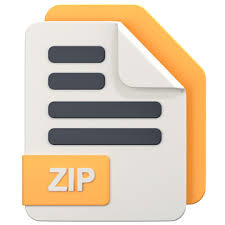
 Texas
Texas
Online Texas Divorce Papers
Download online divorce papers for a do-it-yourself uncontested divorce in the state of Texas. You and your spouse must be in agreement on all of the terms of your divorce and must also meet Texas residency requirements.
Texas Divorce Papers
Get Started With Your Forms
Texas Divorce Overview:
Simple Divorce In Texas - At least one spouse must have resided in the State of Texas for six (6) months prior to the filing for divorce. There is a twenty (20) days waiting period for your spouse to respond to your complaint for divorce. The parties appear in court and state that the marriage has broken down irretrievably and submit a divorce settlement agreement covering all issues regarding the custody, care, education, visitation and support of any minor children and all issues relating to alimony, division of property, debt, etc.
DIY Divorce in Texas: Understanding the Basics.
A DIY divorce, also known as a pro se divorce, involves representing yourself in court without a lawyer. In Texas, this is possible for uncontested divorces where both parties agree on all the terms, such as child custody, child support, property division, and spousal support.
Eligibility for DIY Divorce
To qualify for a DIY divorce in Texas, you and your spouse must meet the following criteria:
- Residency: At least one of you must have lived in Texas for six months or longer before filing for divorce.
- Uncontested Divorce: Both parties must agree on all aspects of the divorce, including child custody, child support, property division, and spousal support.
Steps to a DIY Divorce in Texas
-
Gather Necessary Documents
- Marriage certificate
- Birth certificates of children (if applicable)
- Social Security numbers for all parties involved
- Tax returns
- Bank statements
- Property deeds
- Vehicle titles
- Retirement account statements
- Debt statements
- Employment records
-
Obtain Divorce Forms
You can obtain divorce forms from the following sources:
- Local County Clerk's Office: Visit the county clerk's office where you plan to file your divorce. They will provide you with the necessary forms and instructions.
- Download Free Texas Divorce Forms: Get started on your Texas divorce. Download free forms, print, fill out, and file them yourself.
- Create Your Texas Divorce Forms Online: Answer a few simple questions
about your divorce. Create the forms you need. Print and file them yourself.
-
Complete the Forms
- Carefully read the instructions and complete all the required information.
- Be accurate and truthful in your answers.
- If you're unsure about any part of the forms, consult with a legal professional or seek assistance from a legal aid organization.
-
File the Petition
- File the original petition and two copies with the district clerk's office in the county where you or your spouse resides.
- You may need to pay a filing fee.
- Consider e-filing through the Texas eFile system for a more efficient process.
-
Serve Your Spouse
You must legally serve your spouse with the divorce papers. This can be done by:
- Personal Service: A sheriff or a private process server delivers the papers directly to your spouse.
- Certified Mail: You can mail the papers to your spouse's address via certified mail, return receipt requested.
- Publication: If you can't locate your spouse, you may need to publish a notice of the divorce in a local newspaper.
-
Wait for a Response
Your spouse has 20 days to respond to the petition. If they agree to the terms, they will sign a waiver of citation and a consent agreement.
-
Attend the Hearing
If your spouse doesn't contest the divorce, you may not need to attend a hearing. However, it's best to check with the court to confirm. If a hearing is required, prepare to answer questions from the judge about the terms of your divorce.
-
Receive the Final Decree of Divorce
Once the judge signs the final decree of divorce, it becomes legally binding. You will receive a certified copy of the decree.
Additional Considerations
- Child Custody and Support: If you have children, you must address issues like custody, visitation, and child support in your divorce agreement.
- Property Division: You and your spouse must agree on how to divide your marital property, including real estate, vehicles, and bank accounts.
- Spousal Support: If applicable, you must agree on the terms of spousal support, including the amount and duration.
- Legal Aid Services: If you cannot afford an attorney, you may be eligible for free or low-cost legal assistance from a legal aid organization.
- Mediation: Mediation is a voluntary process where a neutral third party helps you and your spouse reach an agreement on the terms of your divorce.
Common Mistakes to Avoid in a DIY Divorce
- Failing to Understand Texas Family Law: It's crucial to familiarize yourself with Texas family law to ensure you're following the correct procedures and making informed decisions.
- Incomplete or Incorrect Forms: Ensure that you complete all forms accurately and provide all necessary information.
- Improper Service of Process: Incorrect service of process can lead to delays or even dismissal of your case.
- Neglecting to Address Important Issues: Make sure to address all relevant issues, such as child custody, child support, property division, and spousal support.
- Failing to File Necessary Documents: Missing deadlines or failing to file required documents can have serious consequences.
When to Seek Legal Advice
While DIY divorce is possible in Texas, it's important to understand that family law can be complex. Consider consulting with an attorney if you have any of the following:
- Complex Property Division: If you have significant assets or debts, it's advisable to seek legal advice to ensure a fair division.
- Child Custody Disputes: If you and your spouse cannot agree on child custody or visitation arrangements, a lawyer can help you navigate the process.
- Domestic Violence or Abuse: If you're experiencing domestic violence or abuse, you should seek legal advice immediately.
- High-Conflict Divorce: If you and your spouse have a contentious relationship, a lawyer can help protect your rights and interests.
Remember: While this document provides general information about DIY divorce in Texas, it is not a substitute for legal advice. Family law can be complex, and it's always recommended to consult with an attorney, especially for cases involving children, significant assets, or complex property division.
Understanding the Divorce Process
The Filing Process
Once you have completed the necessary forms, you will need to file the original petition and two copies with the district clerk's office in the county where you or your spouse resides. You may need to pay a filing fee.
Service of Process
After filing the petition, you must legally serve your spouse with the divorce papers. This can be done in several ways:
- Personal Service: A sheriff or a private process server delivers the papers directly to your spouse.
- Certified Mail: You can mail the papers to your spouse's address via certified mail, return receipt requested.
- Publication: If you can't locate your spouse, you may need to publish a notice of the divorce in a local newspaper.
Response and Hearing
Your spouse has 20 days to respond to the petition. If they agree to the terms, they will sign a waiver of citation and a consent agreement. If your spouse doesn't contest the divorce, you may not need to attend a hearing. However, it's best to check with the court to confirm. If a hearing is required, prepare to answer questions from the judge about the terms of your divorce.
Final Decree of Divorce
Once the judge signs the final decree of divorce, it becomes legally binding. You will receive a certified copy of the decree.
Using DIY Divorce Forms
When using DIY divorce forms, it's crucial to follow the instructions carefully. Here are some tips:
- Read the Instructions: Before filling out any forms, read the instructions thoroughly.
- Be Accurate and Truthful: Provide accurate and truthful information on all forms.
- Seek Legal Advice if Necessary: If you're unsure about any part of the process, consult with a legal professional.
- File the Forms on Time: Make sure to file all necessary forms on time to avoid delays.
- Keep Copies of All Documents: Keep copies of all documents related to your divorce.
Conclusion
DIY divorce can be a cost-effective way to end your marriage, but it's important to understand the legal process and potential challenges. By following the steps outlined in this guide and seeking legal advice when necessary, you can successfully navigate the DIY divorce process in Texas.
Free Texas Divorce Forms Kit:
- DIY Divorce: Simple, affordable, and uncontested.
- Agreement is Key: Both spouses must agree on all terms.
- Residency Required: Meet Texas residency requirements.
Download, fill out, and file your own divorce paperwork.
Disclaimer: For complex cases or disagreements, consult an attorney.
Printable Texas Divorce Forms Kit:
Fill out your divorce documents according to the instructions. Print and sign and have your divorce documents notarized and ready to file in divorce court. If you are unsure which divorce forms you need, how to fill out your divorce papers correctly, or simply don't know where to begin, you should speak to an attorney or get help with your divorce forms.

 Free Divorce Forms Kit
Free Divorce Forms Kit